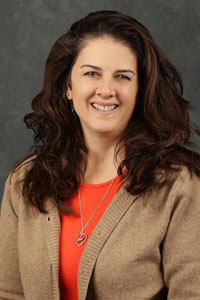The author and her husband, Duane, own and operate a 550-cow dairy in Cochranville, Pa.

The cow, of course, is at the center of it all. This leads to discussions on how our efficiency can be strengthened, how our production can be improved, and how we can strive to increase longevity. Our economic strength does not just depend on maximizing our cow numbers. It also comes from improving the life of each individual cow.
A cow that always adds strength to our financial plan is one that has been in the herd for more than two lactations. Our loan officer likes to say that cows at this stage “make our herd sing.” The mature cow has a powerful economic impact on our farm’s bottom line; a young heifer in its first lactation is still working off its rearing expenses.
When it comes to the day-to-day operations of the farm, the younger cows take more attention. I have noticed that we do not give as much attention to the mature cows. A lot of our focus also goes toward the young stock, as they are the future generation of the milking herd.
The mature cow is in the cycle of its life that is not high maintenance. She knows what to do when she calves, she rarely has issues if there is the proper care, and she makes the most milk of her lifetime.
Sometimes, because she is in a low maintenance phase, this cow can be overlooked, or it is assumed that there are no problems. The little, petty problems that arise with both the younger first-calf heifer and the very aged cow are typically not present.
It happens like the clock on our wall just keeps running. These cows know how to click along each day and, without much oversight, they are filling the tank without the upkeep, drama, or immature behavior.
When a heifer calves and needs to find her place in the milking string, things go much smoother if she is between two mature cows the first time she walks into the parlor. They know exactly what to do and help her figure out the proper routine.
A few years ago, we put an addition onto our freestall barn. This gave us the opportunity to divide one of our group pens into two smaller pens. By doing that, we were able to put most of the younger animals into their own pen. This reduced the problem of older cows pushing away the younger ones.
It also allowed us to make sure the feed in front of the cows is formulated correctly. Our mature animals need a different ration that accommodates their higher milk production.
I guess the older cows feel like this entitles them to claiming space at the feedbunk. There is no question that the senior cows are bossier than the younger ones. They seem to think they deserve better access to the feed and water, and the younger cows are often pushed away. I have even watched an older cow get a younger one up and out of a stall so she can lie down in her place of choice. I suppose it is her privilege.
There are times when their maturity is an advantage in our herd. After our cows give birth in the calving barn, they are walked up the hill to the freestall barn to be milked. Although we have ropes set in place, cows that have been through this process are much more likely to head the right direction without much encouragement. In fact, when they crest the hill and see the feed laid out in the freestall barn, they are even more intentional to get to the barn as quickly as possible.
Every once in a while, we sell a group of milking cows because our cow numbers are higher than what we can accommodate. There is always a bit of push and pull when we go through this process. The buyer wants to make sure they get milk volume, so they will try to pull in some of the second and third lactation animals. Meanwhile, we want to sell a majority of the first lactation cows because they are currently not our highest producers.
It takes a balance to keep the bottom line where it needs to be for the year. The first lactation cows are the farm’s future. However, the multiple lactation cows make us efficient and improve our production, our costs over production, and fill the tank with quality milk quicker.
We currently have a cow that has taken the word sustainability very seriously. She just calved in with her 12th calf and is milking over 100 pounds, with more than 344,000 pounds of lifetime milk produced. This equates to over six tanker loads of milk. Her mature, economic impact deserves some reflection.








